Gonatus antarcticus
Tsunemi KuboderaIntroduction
Gonatus antarcticus was described by Lonnberg (1898) based on a stranded specimen near the Straits of Magellan (mm ML). He stressed that G. antarcticus difffered markedly from G. fabricii, which was the sole Gonatus species known at that time from the northern North Atlantic, by having greatly reduced marginal suckers, compressed hooks of arms I-III, and a little broader and differently shaped gladius. These characters stressed by Lonnberg may be due the comparison with the description of G. fabricii which was based on young individuals.
Diagnosis
A Gonatus with ...
- large-size, very slender mantle (MW=17-18% ML), very long tail (ca. 20% of ML) and soft body.
- long, narrow fins (FL=1/2ML), sagittate with round sides (FW=83% of FL).
- long stout tentacles and small tentacle clubs (TCL=16-17% of ML)
- tentacluar club with central large hook, middle-sized hook distal hook and 3-4 small proximal hooks with distal one largest and sizes decreasing proximally.
Characteristics
- Arms
- Short (40-50% of ML), thick amd muscular.
- Arm formula IV, II=III, I, but differences in lengths not prominent.
- Arm IV with thin lateral keels and arm III with swimming keel along entire lengths.
- Number of hooks and suckers on 1/2 arm III 20-21 and 21-22, respectively.
- Tentacles
- Tentacle long (TL=ML) with relatively small club (TCL=16-17% ML).
- Large central hook with medium-sized distal hook.
- 3-4 hooks proximal to central large hook, distal one largest and decreasing in size rapidly proximally.
- Numerous small suckers on the median portion of the tentacular stalk.
- Tentacle long (TL=ML) with relatively small club (TCL=16-17% ML).
- Head
- Almost squarish in shape, slightly narrower than mantle opening.
- Funnel cartilage lanceolate in shape; nuchal cartilage rectangular with three grooves.
- Fins and tail
- Fins long, narrow (FL=1/2ML), sagittate with round sides (FW=83% of FL).
- Long tail (ca. 20% of ML).
- Photophores
- Photophores absent.
Comments
Gonatus antarcticus is considered to be closely related to Gonatus species in the North Atrantic, i. e., G. fabricii and G. steenstrupi on the basis of external morphology. Imber (1978) considered that G. californiensis might be a synonym of G. antarcticus without reliable information. Tentacluar club structure and number of suckers on the tentacular stalk of G. californiensis apparently differ from G. antarcticus. Complete absence of Gonatus in tropical waters indicates that this group has a distinct bipolar distiribution. Imber (1978) also described G. phoebetriae based on a single lower beak form the stomach contents of sooty albatross from off New Zealand. However, the validity of G. phoebetriae is very dubious due to incomplete comparison among beaks in the families and considered to be a species dubium. G. antarcticus is the sole Gonatus species distributed in the southern hemisphere.
Distribution
The distribution of G. antarcticus is primarily in the Atlantic sector of Antarctic waters around the Antarctic Convergence at 40 S. More details of the distribution are found here.
References
Kristensen, T. 1981. The genus Gonatus Gray, 1849 (Mollusca: Cephalopoda) in the North Atlantic. A revision of the North Atlantic species and description of Gonatus steenstrupi n. sp. Steenstrupia, 7(4): 61-99.
Kubodera, T. and T. Okutani. 1986. New and Rare Cephalopods from the Antarctic Waters. Memoirs of National Institute of Polar Research, Special Issue, 44:129-143.
Okutani, T. 2005. Cuttlefishes and squids of the world. Publication for the 40th Aniversary of the Foundation of National Cooperative Association of Squid Processors. 253pp.
Title Illustrations

| Scientific Name | Galiteuthis glacialis |
|---|---|
| Location | Ross Sea, Antarctica at 66°54'S, 171°04'E |
| Creator | Darren Stevens |
| Acknowledgements | New Zealand part of the International Polar Year and the Census of Antarctic Marine Life |
| Identified By | Darren Stevens |
| View | Ventral |
| Size | 210 mm ML |
| Collection | NIWA |
| Collector | LINZ |
| Image Use |
 This media file is licensed under the Creative Commons Attribution License - Version 3.0. This media file is licensed under the Creative Commons Attribution License - Version 3.0.
|
| Copyright | © D.Stevens NZ IPY-CAML |
| Scientific Name | Gonatus antarcticus |
|---|---|
| Location | 47°24' S, 59°37' W, north of Falkland Islands in the South Atlantic Ocean |
| Comments | Bottom trawl at about 928 m depth |
| Reference | Kubodera, T. and T. Okutani. 1986. New and Rare Cephalopods from the Antarctic Waters. Memoirs of National Institute of Polar Research, Special Issue, 44:129-143. |
| Identified By | T. Kubodera, T. Okutani |
| View | Ventral |
| Size | 230 mm ML |
| Image Use |
 This media file is licensed under the Creative Commons Attribution-NonCommercial License - Version 3.0. This media file is licensed under the Creative Commons Attribution-NonCommercial License - Version 3.0.
|
| Copyright |
©
Tsunemi Kubodera

|
About This Page
Tsunemi Kubodera

National Science Museum, Tokyo, Japan
Correspondence regarding this page should be directed to Tsunemi Kubodera at
Kubodera@kahaku.go.jp
Page copyright © 2016 Tsunemi Kubodera
 Page: Tree of Life
Gonatus antarcticus .
Authored by
Tsunemi Kubodera.
The TEXT of this page is licensed under the
Creative Commons Attribution-NonCommercial License - Version 3.0. Note that images and other media
featured on this page are each governed by their own license, and they may or may not be available
for reuse. Click on an image or a media link to access the media data window, which provides the
relevant licensing information. For the general terms and conditions of ToL material reuse and
redistribution, please see the Tree of Life Copyright
Policies.
Page: Tree of Life
Gonatus antarcticus .
Authored by
Tsunemi Kubodera.
The TEXT of this page is licensed under the
Creative Commons Attribution-NonCommercial License - Version 3.0. Note that images and other media
featured on this page are each governed by their own license, and they may or may not be available
for reuse. Click on an image or a media link to access the media data window, which provides the
relevant licensing information. For the general terms and conditions of ToL material reuse and
redistribution, please see the Tree of Life Copyright
Policies.
- First online 31 May 2006
- Content changed 31 May 2006
Citing this page:
Kubodera, Tsunemi. 2006. Gonatus antarcticus . Version 31 May 2006. http://tolweb.org/Gonatus_antarcticus/19778/2006.05.31 in The Tree of Life Web Project, http://tolweb.org/





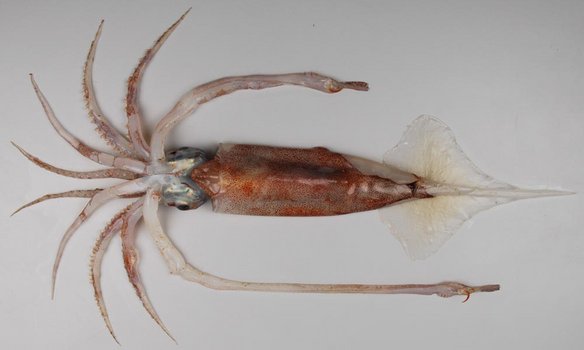
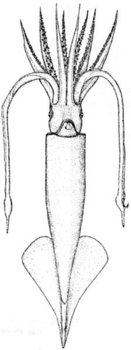
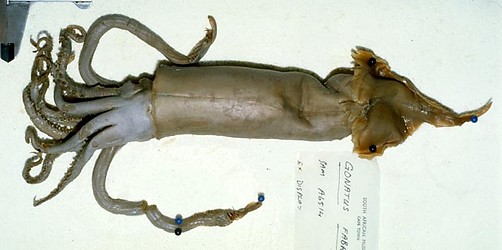


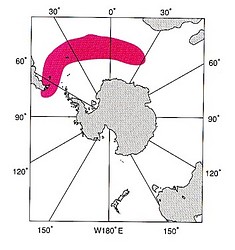
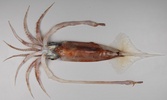



 Go to quick links
Go to quick search
Go to navigation for this section of the ToL site
Go to detailed links for the ToL site
Go to quick links
Go to quick search
Go to navigation for this section of the ToL site
Go to detailed links for the ToL site